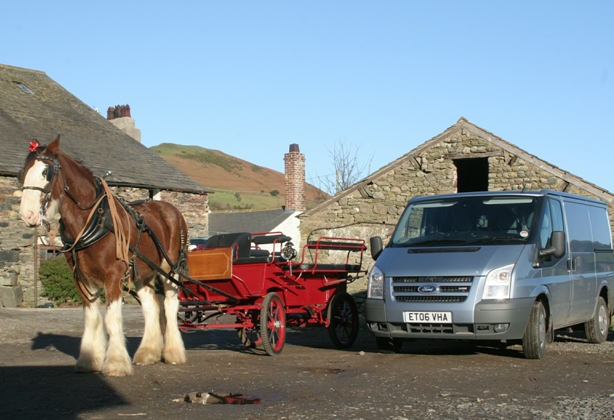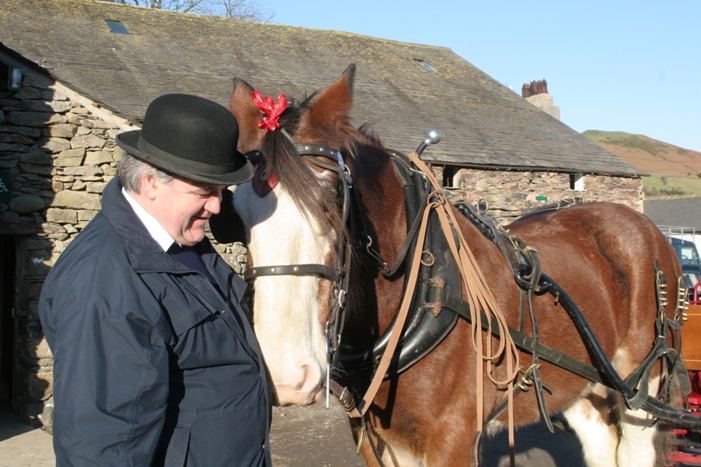Going metric was supposed to simplify life. And for sure it made counting your money easier even if everyone rounded up rather than down, but in all other respects it made life more difficult. For instance, we now have speedometers with two scales showing speed, one for ‘mph’ and the other for ‘kph’. At a more basic level, how many kilograms of potatoes do you need to make a pan of chips to feed the family?
But that was easy compared to technical terms. We take the terms ‘hp’ and ‘bhp’ for granted, but the business of joining Europe in 1973 introduced many more new problems into the daily life of Brits. Why do we have to conform to their ideas, rather than them to us?
For instance the Germans use PS (pferdestarke – which means horse strength) and the French CP (chevaux pouvoir – horse power) whereas the Dutch do Kw (Kilowatts).
Complicating the issue, they are all slightly different terms of measurement. Over the years, automotive manufacturers have exploited this fact, and our ignorance, by confusing us with technical jargon and a wide variance of figures and measurements in their brochures and technical specifications.
So where did all this confusion arise? Blame the Scots. At least it was an honest attempt to standardise the issue, but James Watt was the first to try and resolve the measurement of power 250 years ago. At the time, steam engines were very inefficient, but Watt improved the technology generating more power from less fuel, which led to the obvious comment – Prove it!
The obvious answer was to measure the power output, but how do you measure an invisible force? Initial experiments involved the use of horses hauling coal. His study determined that horses could haul coal at the average rate of 22,000 foot-pounds per minute. These experiments were further refined and resulted in ‘one horsepower’ being defined as the amount of power required to lift a mass of 33,000 pounds through a vertical distance of 1 foot in 1 minute. This is also stated as 550 foot pounds per second (fps).
Having invented a reliable system of power measurement, this is where the trouble started. In the UK, one horsepower is equal to 550 foot-pounds per second or 745.7 watts, but the Americans rounded it up to 746 watts while the Europeans converted it to 735.5 watts in their metric system! Incidentally, now you also know where the power measurement for light bulbs and electricity comes from.
In other words, the Europeans hijacked his system to make it their own and here we are in the 21st century and it is us the originators who are having to conform, not them the horsepower hijackers who nicked our calculations in the first place. Crikey if it hadn’t been for us, the continentals wouldn’t have TV, telephones, tarmacadam, fountain pens, penicillin, pedal bicycles or rubber tyres, not to mention haggis and Scotch!
Which brings us to Torque …
Simply put, torque is turning force. By attaching a lever to an engine’s crankshaft, the resultant twisting force can be measured. This is torque. Originally measured in pounds/foot by James Watt, it is now becoming more common to see it expressed as a figure in Newton Metres. Although metric, this system was devised by Sir Isaac Newton, an English mathematician and physicist – so that’s alright then.
Brake horsepower, BHP, is another fairly common term and this refers to the power measured at the crankshaft using a ‘prony’ brake (named after a French mathematician). The principle of the Prony Brake is that an engine or motor is directly coupled to a drum that has a tensioned, friction belt around it. As the drum revolves, the frictional force is measured. Nowadays, computers and strain gauges are used to measure the power.
Not so fashionable is the term ‘gross horsepower’ which is the power measured at the crankshaft without any engine accessories. This includes removing the air cleaner and ductwork, exhaust system, water pump drive, and any other devices driven by the engine. Prior to 1973, horsepower specifications were listed by manufacturers as gross horsepower. Since then ‘net horsepower’ has been the more commonly used figure which is measured at the crankshaft before it goes into the transmission, but complete with accessories and ductwork.
So, if torque is a measure of the engine’s turning force at the crankshaft, BHP is a measure of the engine’s power, that is the rate that work is done, so an engine’s BHP rating depends on the torque and the engine speed (RPM).
At a given engine speed, say 2000 RPM, an engine with a high torque figure will produce more power than an engine with smaller torque.
Petrol engines can rev higher than diesel engines so can generate higher BHP figures even though their torque may be low, but diesel engines appeal to CV manufacturers because they typically produce higher torque at lower RPM, so are more powerful than their petrol equivalents at the same engine speed.
So now you know all there is to know about where these industry-standard technical terms came from. But if this is all a bit too technical and complicated, let me simplify it further and explain the true meaning behind the term ‘one horsepower’.
Enter Max the Clydesdale …
In motoring we blithely talk about ‘horsepower’ but ask anyone what exactly it is and how it is measured and it will result in dumbfounded quizzical looks and much scratching of the napper. Anyway, for the purpose of the Christmas Road Test I went in search of an original ‘one horsepower’ vehicle.

That resulted in a visit to the Cumbrian Heavy Horse Riding Centre at Chappels Farm on the A595 in the south west corner of the Lake District. And this was where I was introduced to Max the Clydesdale. Almost one tonne of muscle, sinew and hair, and yet as docile as a lamb.
First of all, forget the Working Time Directive rules for commercial vehicles and the pre-shift vehicle walk-around. It takes half an hour to harness up a horse and hitch it to the cart before starting its shift and then it’s the same again at the end of the working day. But you can’t talk to a van while you’re doing your pre-start safety and fluid checks.
There is another problem with a horse, there is no Handbook in the glovebox. So you have to learn the Horseway Code before you can start. Fortunately, it’s pretty simple. The words “OK, walk on” is all that’s required to start it and “Whoa” has the same effect as putting a foot on the brake pedal. The harder you shout “Whoa” while drawing out the vowels is similar in effect to stamping harder! As for the emergency stop, apparently (I didn’t try it!) the recommended method is to shout “Whoa” a lot louder while pulling hard on the reins.
Braking distances are remarkably impressive given the power output and torque generated by a huge animal like Max, but an emergency stop on cobbles can produce sparks. For sure, brakes are needed. At full tilt, a Clydesdale (minus cart) can top 30 mph.
There is no power steering, but it’s not really needed, a gentle pull either to the right or left turns the horse. The harder the pull, the tighter the turn. It’s all about touch and feel – just like a racing car!
Selecting reverse gear is slightly more difficult. Pulling on the reins while calling “Back” works, but getting off the cart and walking to the horse’s head and guiding him back is a better option.
As for Parking Brake, the word “Stay” usually does the trick, although from personal recollection, I recall the local coalman used to carry a couple of chocks to steady a cart when parked while he hefted bags of coal on his back.
There are no trafficators either, so when making turns on the road, the driver has to use hand signals. Neither are there any brake lights, so knowledge of the circular arm-waving slowing down manoeuvre is advisable rather than depending on following drivers looking out for the sparks of steel striking the road surface.
There is one serious drawback. There is no key-less entry or inbuilt security system. And despite your best intentions when parking outside the local shop, any smooth talking operator with a sticky bun or a carrot could tempt the horse to walk off. Fortunately, Max is not that stupid. And when he realises the stranger has no more carrots, he will stop and wait for a familiar voice. And there’s no way on this earth that any mere human could persuade Max to go where he doesn’t want to go.
Yes, there’s a lot more to it, but driving a horse and cart is remarkably easy. There are two working speeds ‘walk’ and ‘trot’ although depending on the rig, some horses can work up to a ‘canter’, but it’s not about speed, it’s about power.
The Editorial Ford Transit is a 2.6t GVW panel van with the very latest common rail, turbocharged, diesel engine which produces 85 horsepower – Max can pull the van on his own! And that’s ONE horsepower. Technology may have moved on, but it still can’t beat Nature in the raw.
There is however one thing a horse can do that a van can’t. It will come when you whistle. And even on the darkest, wettest, windiest, wintry morning when the owners leave the house to walk across the yard to the stable, they will be greeted by the snort or whinny from a welcoming committee of heavy horses who recognise their tread on the tarmac. And that puts a spring in their step that lasts for the rest of the day. A van can’t do that either.
It also put a spring in my own step. Visiting the Centre and mixing with these gentle giants was not only memorable, it was very moving. I can’t recall a more stimulating, yet relaxing, and enjoyable ‘break’ from the pressures of work. I can thoroughly recommend it. Indeed, for those suffering from stress or gridlock, I advise booking a session here purely on medicinal grounds!
**
Advantages
No passer-by is ever a stranger when driving a horse.
You can talk to a horse – and it will acknowledge you.
Disadvantages
There is nowhere to plug in the SatNav
The driver sits downwind of a huge animal that eats a lot of roughage!
